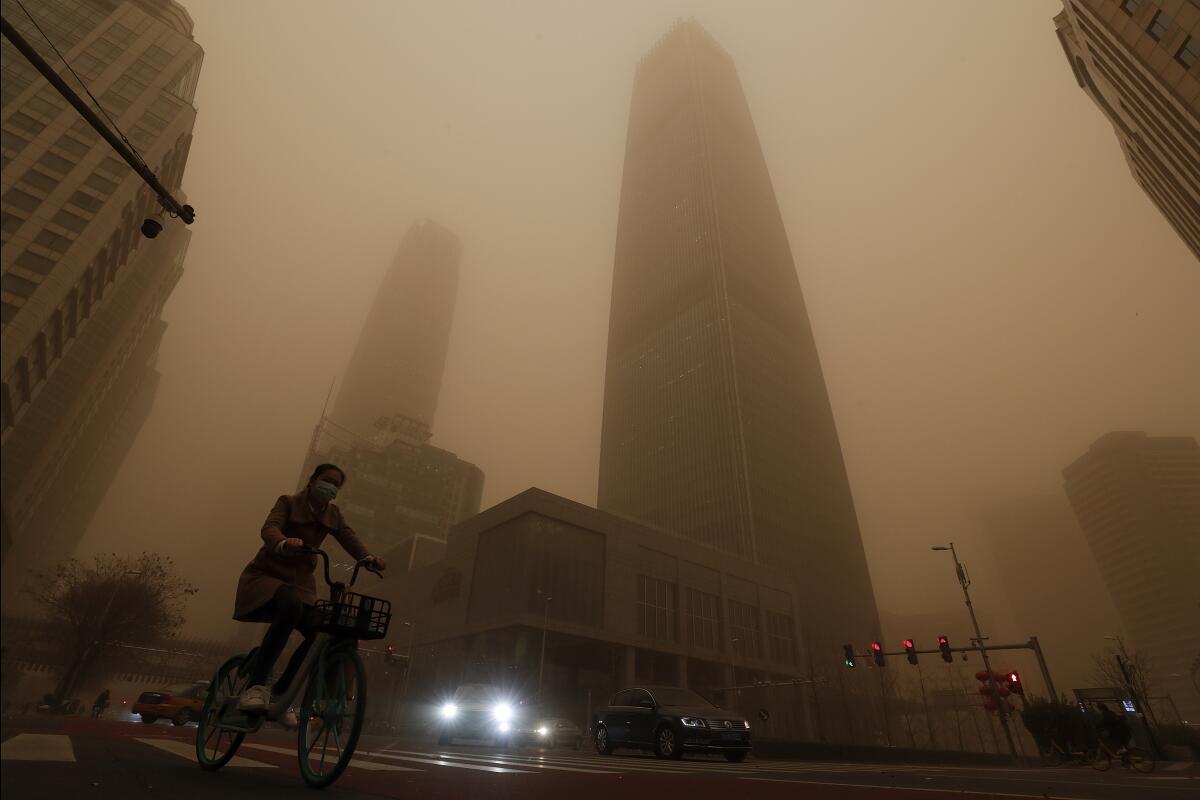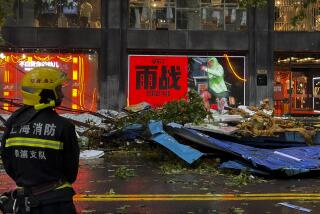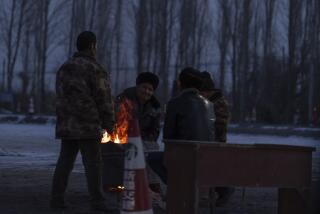Flights are canceled, buildings vanish from view in China’s worst sandstorm in a decade

- Share via
BEIJING — China’s capital and a wide swath of the country’s north were enveloped Monday in the worst sandstorm in a decade, forcing the cancellation of hundreds of flights.
Skyscrapers in the center of Beijing vanished from sight amid the dust and sand. Traffic was snarled, and more than 400 flights out of the city’s two main airports were canceled amid high winds and low visibility.
The National Meteorological Center said Monday’s storm had developed in the Gobi Desert in the Inner Mongolia region, where schools were advised to close and bus service was added to reduce residents’ exposure to the harsh conditions.
Such storms used to occur regularly in the spring as sand from western deserts blew eastwards, affecting areas as far as northern Japan.
Massive planting of trees and bushes in fragile areas has reduced the effects on other parts of the country in recent years, but the expansion of cities and industries, along with strip-mining and overgrazing, has put constant pressure on the environment throughout China. With its mix of desert and grassy steppe, Inner Mongolia is particularly prone to extreme weather resulting from resource exploitation.
Like the coronavirus, which is believed to have spread from bats and other wild animals, sandstorms are a reminder of the need to respect nature, said Zhou Jinfeng, secretary general of the conservation group China Biodiversity Conservation and Green Development Foundation.
Fears are intensifying over the gargantuan Three Gorges Dam, where the reservoir has risen to its highest point since the dam was completed in 2006.
“Together with the pandemic, that’s another big lesson we should take, and we should change our behavior,” Zhou said.
The National Meteorological Center forecast that the sand and dust would affect 12 provinces and regions, from Xinjiang in the far northwest to Heilongjiang in the northeast and the eastern coastal port city of Tianjin.
“This is the most intense sandstorm weather our country has seen in 10 years, as well as it covering the broadest area,” the center said in a post on its website.
It wasn’t clear if the storm was related to a recent general decline in air quality despite efforts to end Beijing’s choking smog.
The ruling Communist Party has pledged to reduce carbon emissions over the next five years. Environmentalists say China needs to do more to reduce its dependency on coal, which has made it the world’s biggest emitter of climate-changing gases.
More to Read
Sign up for Essential California
The most important California stories and recommendations in your inbox every morning.
You may occasionally receive promotional content from the Los Angeles Times.














